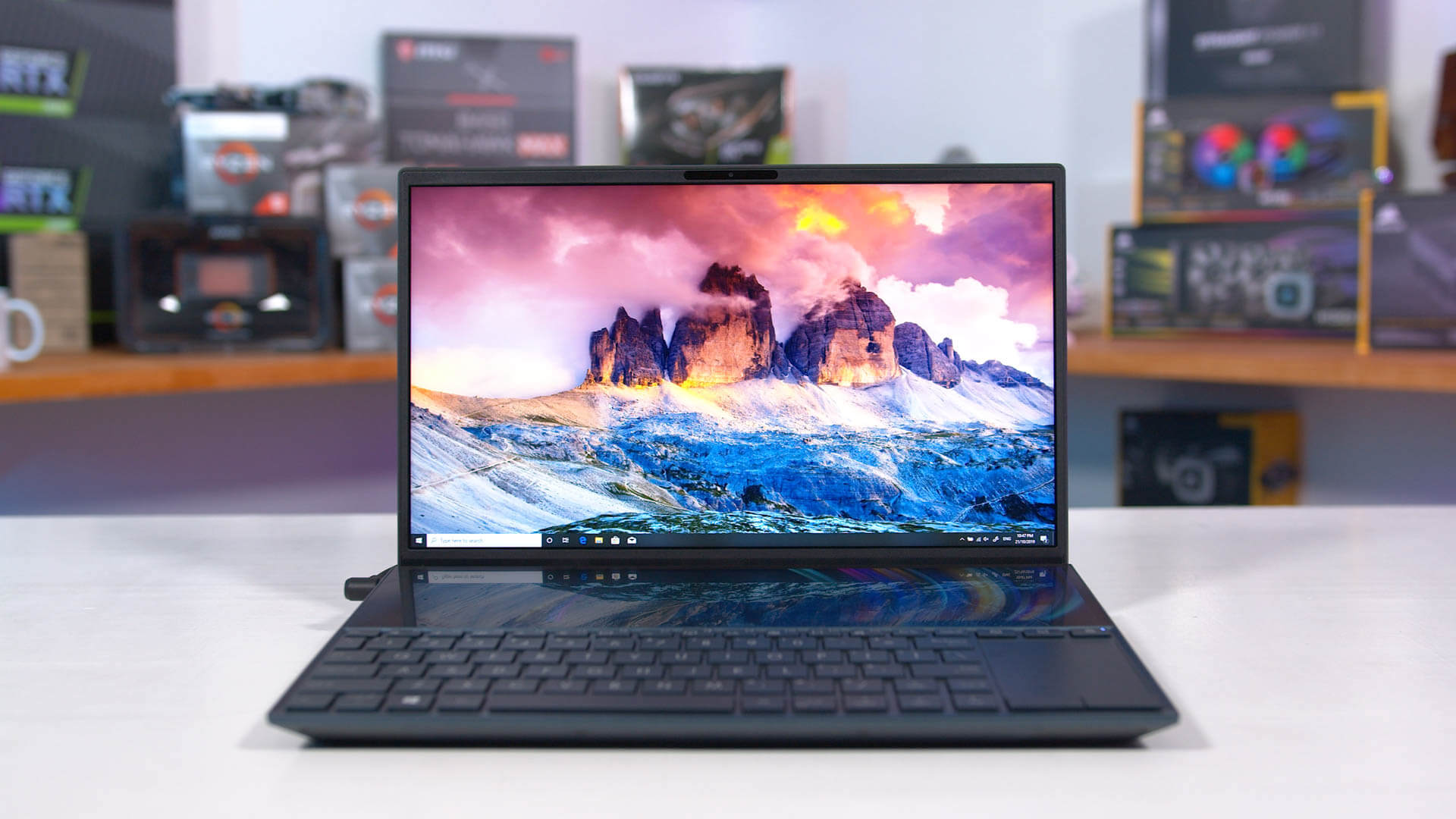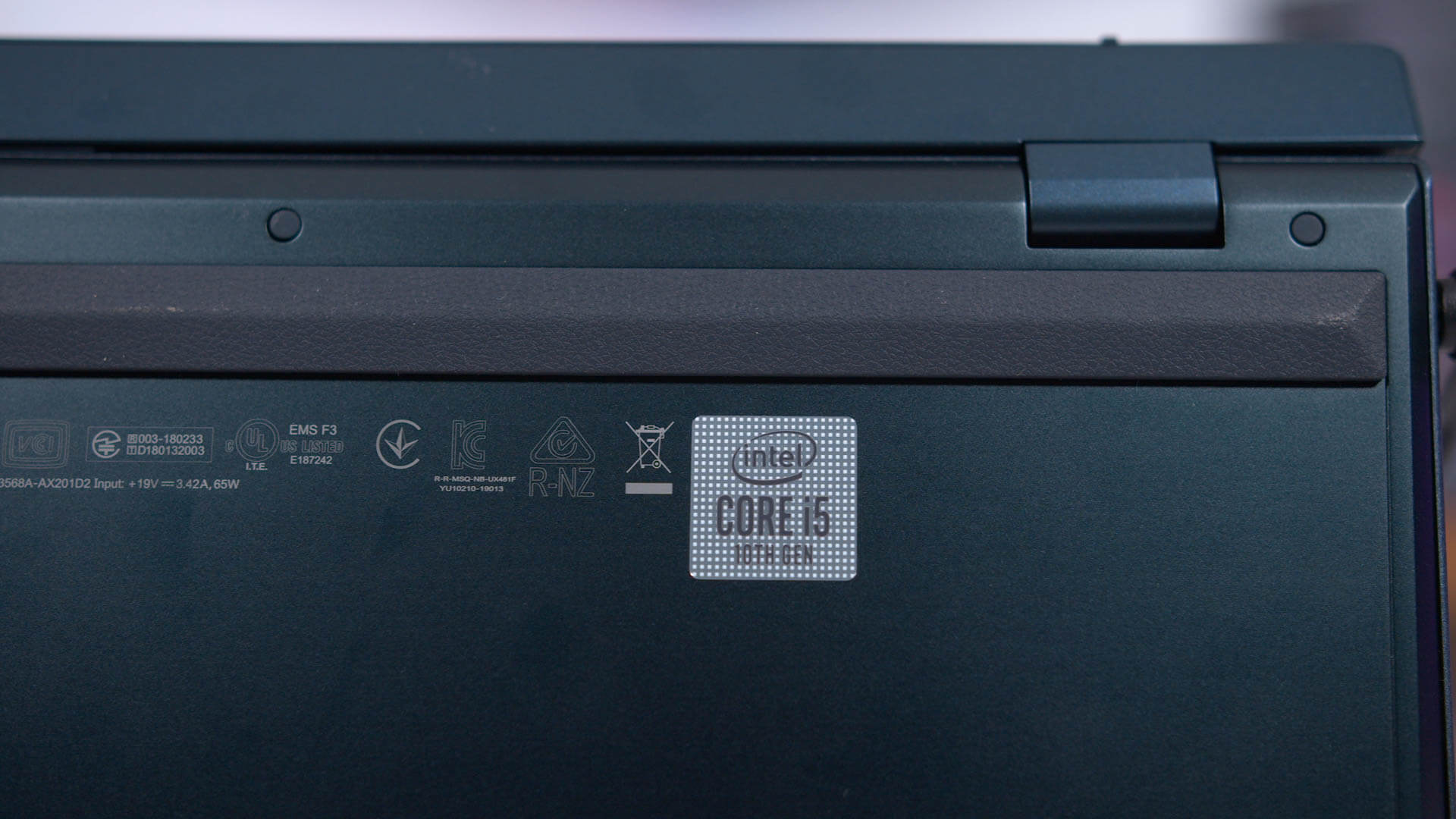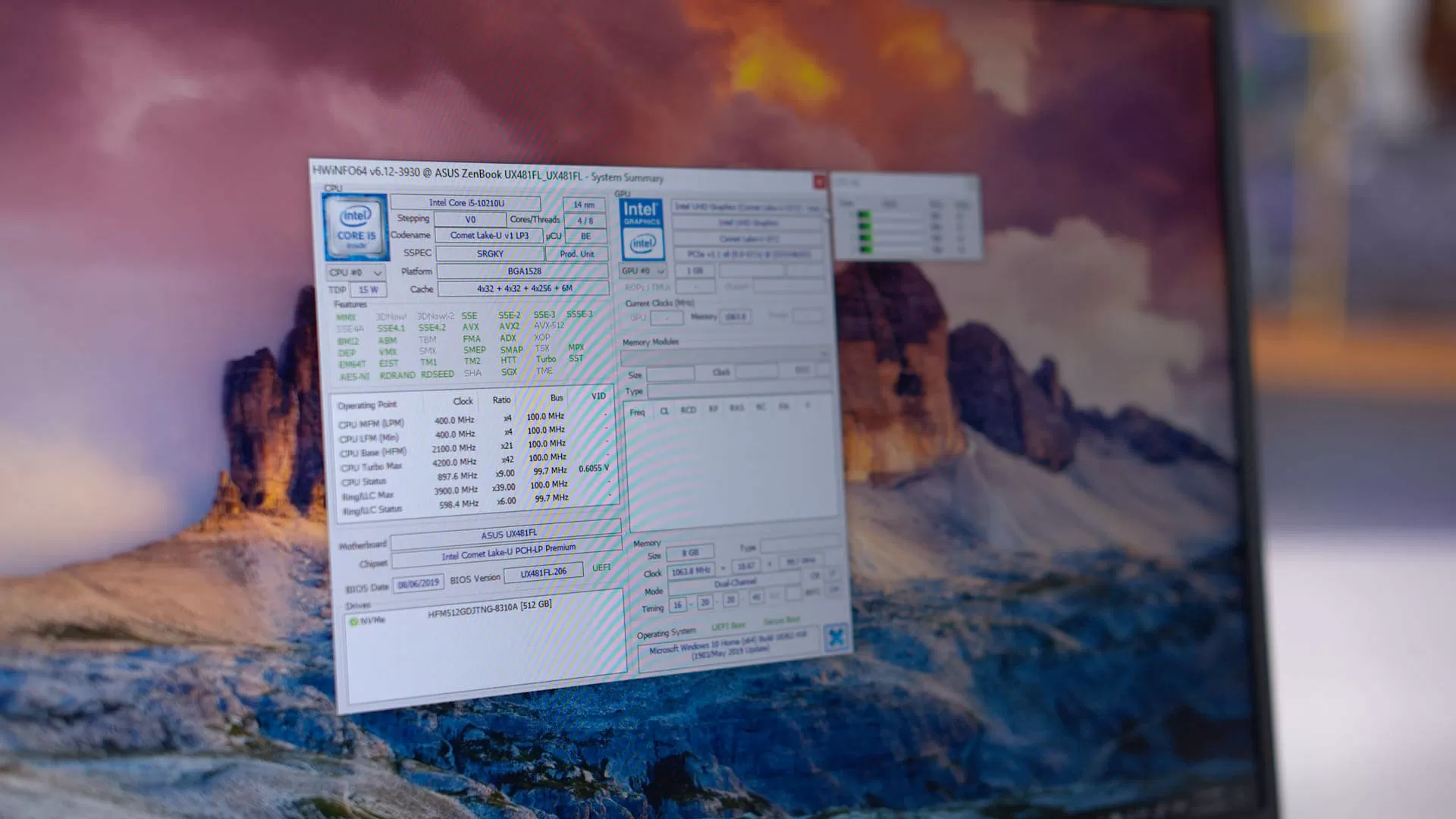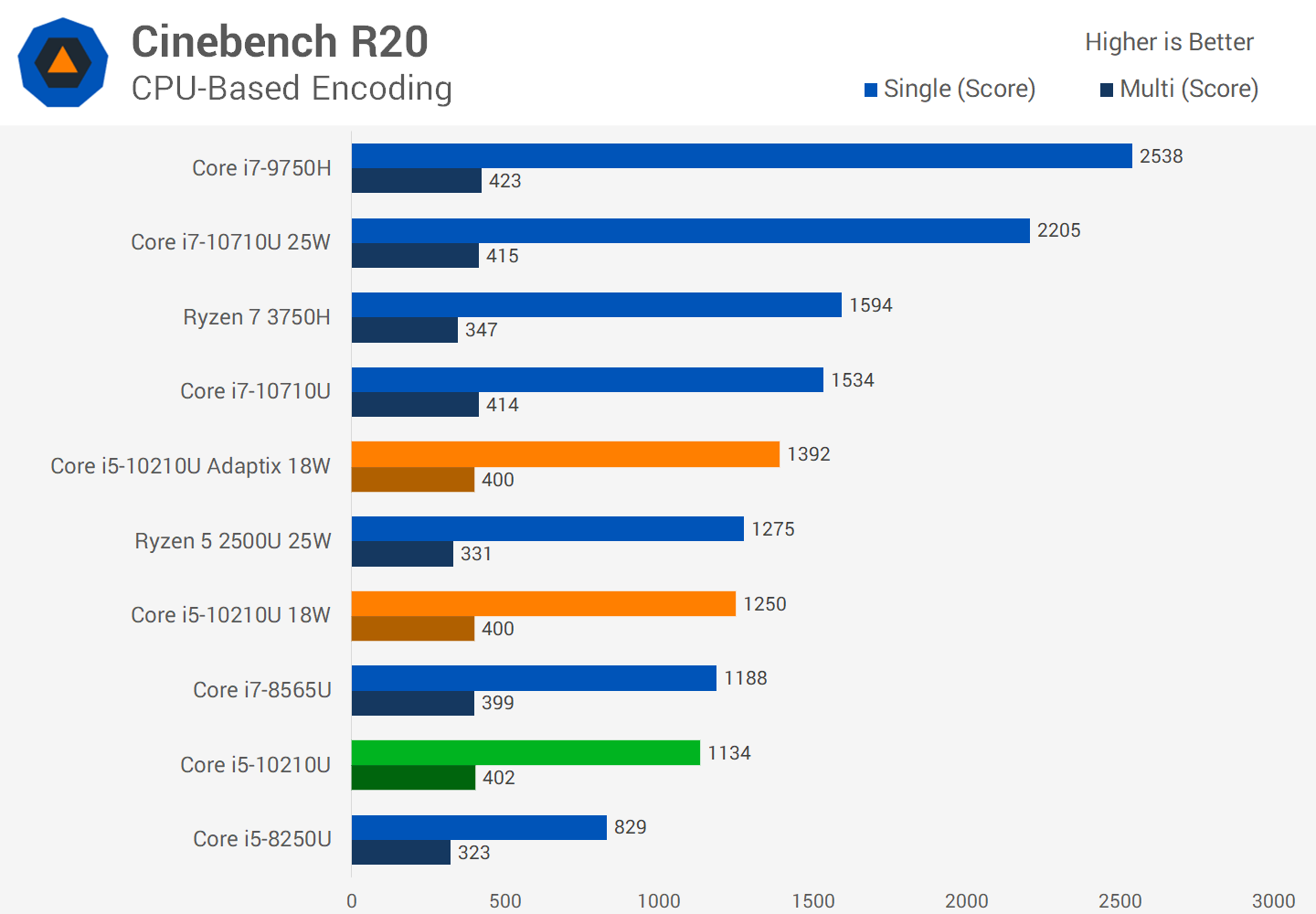- Dell XPS 13 (2015) Review
- HP Envy 14 Notebook Review
- Acer Timeline 14" 4810T Notebook Review
- Lenovo ThinkPad Helix Review
We had been pleasantly surprised currently while we checked out the Core i7-10710U. This changed into the first demonstration of what Intel can nevertheless do on 14nm to squeeze more performance. The 10710U packs six cores and twelve threads into a 15W bundle. Even although this CPU runs underneath 2.0 GHz in long time tests to get all those cores operating inside one of these tight TDP, it nevertheless controlled to deliver as much as 30% extra overall performance than 8th-gen CPUs.
This is down to Intel optimizing the efficiency point of this CPU. By reducing clock speeds slightly, Intel gained sufficient electricity price range to add in two more cores, and those two cores greater than offset the reduction in clock speed, giving us greater overall performance in multi-threaded workloads. It makes the CPU design greater complicated and luxurious and the gains are simplest found in workloads that use greater than 4 cores, however there’s no doubt the gains are there.

Today we're finding out any other 10th-era Intel CPU, and just like the last one, this chip is lots more interesting than it appears at face value. You’d assume that with those 14nm+++ CPUs Intel has essentially not anything left inside the tank, however in spite of the quad-center we’re reviewing these days, that’s extraordinarily some distance from the fact.
The aforementioned i7-10710U is the handiest CPU in Intel’s new tenth-gen line-up that has six cores. The rest are quad-cores, or maybe dual-cores if we pass right down to the Core i3s, Celerons and Pentiums. The Core i7-10510U, as an example, is a 4 middle 8 thread CPU but it’s clocked a respectable quantity better than the six-center 10710U, with its 1.8 GHz base clock and four.nine GHz maximum faster clock. This is better than any Whiskey Lake CPU as nicely, specially the popular Core i7-8565U, that is clocked as much as 300 MHz decrease.
Then we get to the CPU we are reviewing today, The Intel Core i5-10210U sports activities 4 cores and 8 threads, but with some reductions compared to the Core i7 fashions. Clock speeds are decrease, at a 1.6 GHz base clock and most unmarried center rapid of 4.2 GHz.

That’s a little better than the equal ultimate-gen Core i5 at the most rapid speed, but not extremely distinct. Similar tale with the all-middle faster, which sits with the 10210U at three.9 GHz, up from three.7 GHz. With both of these clocks, we aren’t pretty at the level of the Core i7-8565U, but commonly speaking, for a 15W processor we're electricity restricted as opposed to clock confined and that’s something we’ll discover at some point of the review.
The different vital thing right here is the L3 cache length, which drops down from 8 MB to six MB as with previous Core i5 models, with unified get right of entry to throughout the same variety of cores. On a much less critical be aware, the GPU remains the same, a UHD 620 with 24 execution gadgets. It’s clocked 50 MHz decrease on the Core i5 as compared to beyond Core i7s, but what you ought to recognise is this is handiest a serviceable GPU that’s slightly changed from when Skylake U-collection CPUs launched all the ones years ago.

As we cited in our previous 10th-gen Core review, Intel hasn’t made it clean for the common computer purchaser to parent out which CPU they're getting and at what overall performance degree. Comet Lake, the road-up we’ve simply been speaking approximately, exists along Ice Lake on 10nm. Ice Lake CPUs are restrained to quad-core designs at lower clock speeds at the CPU, but have beefier included pictures with up to 64 execution gadgets. Customers after the high-quality CPU performance have to be at the appearance out for Comet Lake, while people who need better GPUs is probably greater inquisitive about Ice Lake.
The naming scheme is absolutely unfriendly although. The Comet Lake Core i5 chip we are reviewing today is the Core i5-10210U. While Ice Lake Core i5s get names like Core i5-1035G1 or Core i5-1035G7, relying at the snap shots configuration. There’s also the Core i5-1030G4 and G7 at 9W in place of 15W, similarly muddying the waters. This simply wishes to be simplified.
Combine this with the reality that many laptops also come with low-strength discrete GPUs to beef up pictures overall performance. So grabbing an Ice Lake laptop may not even deliver the high-quality GPU enjoy, relative to a Comet Lake product with a discrete GPU.

Moving on, you may need to recognize Comet Lake comes with some additional features in comparison to preceding-gen merchandise, so it isn’t a simple refresh with specific clock speeds. We’re now getting aid for memory up to DDR4-2666 speeds or LPDDR4x-2933, in addition to native Wi-Fi 6 help. But the bigger improvement comes within the form of some thing called Intel Adaptix, which we didn’t cover in our Core i7-10710U Laptopbecause it wasn’t enabled at the computer we examined.
Adaptix is a characteristic new to not just Comet Lake, but 10th-gen CPUs in popular, so proper now this additionally includes Ice Lake. It’s a new version of Intel’s dynamic tuning generation that takes rapid boosts a step further than we’ve seen formerly in a cellular form factor.
Before, with Intel’s 8th-gen CPUs you will get two electricity limits: PL1, which is the long time strength restrict, and PL2, the fast term limit for rapid boost. When a workload gets fired up, the CPU could jump as much as PL2 for a predetermined amount of time, then cut again to PL1 when that time is up. So on a 15W laptop, that might typically be a boost up to 45W for a few seconds with better clock speeds, then a drop directly down to 15W for the rest of the workload.

Intel Adaptix modifications this. Instead of losing down to the sustained PL1 restrict, Adaptix adjusts the PL1 restriction dynamically over the years to maximize overall performance based at the limits of the device. These limits are commonly thermal constraints. This could see the system run at above the long term PL1 restriction for a miles longer time because the thermal limit of the machine hasn’t been reached.
In some approaches, the antique machine changed into leaving plenty of ability overall performance at the table. If the machine dropped down to PL1 well before the cooler had heated up to its sustainable limit, it could have boosted for longer to attain the restrict quicker, earlier than then losing down. Adaptix is aimed at solving that hassle and Intel says it can provide eight-12 percent greater performance. However, Adaptix is optional and requires lots of profiling at the OEM aspect, so it’s only enabled on a few systems.
Our Core i5-10210U check platform is Adaptix enabled, and it's none aside from the brand new Asus ZenBook Pro Duo.

This is an exciting laptop to check because it comes with a second display above the keyboard. We’ve been the usage of this pc for the previous couple of weeks. For the stuff we commonly do on a pc like net browsing, spreadsheet enhancing and so forth, the second one display isn’t all that beneficial but for some humans, having it there might be reachable. It’s a completely precise design and overall the laptop could be very transportable, becoming right into a 14-inch shape issue.
The specific version we have reachable is the ZenBook Pro Duo UX481FL. It makes use of a 14-inch 1080p show, the Core i5-10210U processor, GeForce MX250 graphics, and 8GB of DDR4 memory. You can arise to Core i7 CPUs and 16GB of RAM in here, although it’s great to look the MX250 is retained for the Core i5 version. For the reason of testing the i5-10210U thoroughly though, we’ve benchmarked with each the MX250 enabled and disabled.
Benchmarks
We’re going to kick this one off with a observe Cinebench R20. First, let’s quickly run through the configurations we've got right here. This is the usual Core i5-10210U running with Adaptix manually disabled, in a standard 15W configuration. This gives us an apples-to-apples assessment with different U-collection CPUs, which are configured to 15W right here as well except otherwise certain. This is what a standard consumer can assume from a 10210U laptop wherein Adaptix is not used.
Then we've got two 18W configurations, one with Adaptix enabled, and any other with out. The motive we’ve configured it up to 18W right here, is that the ZenBook Pro Duo comes by way of default with a long-time period PL1 limit of around 17 to 19W, hovering between that mark with Adaptix enabled out of the container. We can then manually limit the CPU to a PL1 of 18W using the Intel Extreme Tuning Utility, and that gives us a examine the overall performance advantage we’re getting from Adaptix specifically, and whether or not or no longer it’s worth finding laptops with this non-obligatory characteristic enabled.

The first thing to observe is that this tenth-gen Comet Lake Core i5 isn't always some distance away from Intel’s 8th-gen Whiskey Lake Core i7 inside the i7-8565U. We’re handiest about 4 percentage behind and faster in the unmarried-threaded test, which is superb from a mid-range Core i5. However, evaluating Core i5 to Core i7 inside the 10th-era, and the Core i5 is 23 percentage slower, so those more cores you get with the 10710U are a substantial addition for this form of workload.
We’re additionally getting a terrific study Intel’s Adaptix technology. In this benchmark, having Adaptix enabled is turning in an 11% overall performance development from being able to enhance that bit better on this medium-term take a look at.

We can see above what’s occurring to clock speeds with a take a look at Cinebench R20. Without Adaptix, the 10210U plays as we’ve continually visible from Intel mobile CPUs. We get a quick period boosting into the PL2 kingdom, this time clocked round 3.7 to 3.nine GHz that's anticipated given this CPU’s most all-middle turbo frequency. Then it drops down and maintains a constant clock all through PL1, that's round 2.5 GHz configured at 18W, or 2.three GHz at 15W.
With Adaptix enabled, the chart appears very extraordinary. We nevertheless get that increase period proper at the begin, however right away after that, rather than dropping right down to PL1, clock speeds regularly fall away and best half of manner through the test do we see them reach the long term restriction of about 18W, handing over 2.5 GHz all-middle. So for greater than half of this take a look at we’re benefitting from clock speeds over a GHz better in some conditions, as we’re walking closer to the thermal limits.
There’s no assure that this clock pace conduct may be the equal for all Adaptix laptops, in fact, we are able to nearly guarantee there there can be versions depending at the cooling capabilities. This Asus computer appears to have sturdy cooling, so this might be a excellent case situation.
Looking on the older Cinebench R15, we’re getting an excellent higher performance raise from Adaptix. This is due to the fact Cinebench R15’s multi-threaded check is faster to run, so even greater of the benchmark run takes place all through a boost segment. This gives the 10210U very impressive effects, nearly matching the 10710U.

Something else to be aware, the enhance in overall performance you get from Intel’s Adaptix technology will depend upon how you're the use of your system or how the workload is configured. If your machine is idle earlier than walking a positive CPU extensive undertaking, you’ll get the largest advantage, and might see even larger profits than we’re showing here. If you’ve been doing a few moderate responsibilities, you’ll get a moderate development, and in case you’ve simply been smashing your CPU at 100% usage, it’s not going you’ll see any advantage. For these benchmarks we perform a median of three runs returned to again, so the primary run tends to supply a higher rating with Adaptix enabled than the successive runs. Generally our numbers represent a ‘combined’ use case where you may pass from doing one issue, directly into any other, with a few small intervals of idle in among.
In longer workloads, the benefits of Adaptix are reduced. Here we've x264 encoding, and we’re simplest getting a 6% performance advantage in pass 1, and simply 2 percent in skip 2. When the CPU falls lower back to long term limits, there’s no difference in clock speeds and hence no distinction in overall performance between the two modes.

That said, on this benchmark it’s fine to look the i5-10210U and i7-8565U imparting approximately the equal performance. The new six-center model takes things up a notch once more with this 10th-gen line-up, but getting last yr’s Core i7 overall performance in this yr’s Core i5 is not awful at all.
Similar story in Handbrake, although this test is very constrained by means of the 15W TDP of those CPUs. The i5-10210U is about 5% in the back of last year’s 8565U, but also 5% faster than Intel’s Core i5 from generations in the past. For similarly gains in Handbrake you need extra cores or a better TDP.

In 7-zip, the i5-10210U is marginally in advance of the Core i7-8565U in decompression and marginally behind in compression, so buying and selling blows with closing-gen’s Core i7. Adaptix offers a small improve, 8 percentage in decompression and 4 percent in compression, which once more is likewise first rate. A Core i5-10210U computer with Adaptix enabled will without problems beat Intel’s remaining-gen offerings if configured to comparable long time PL1 TDPs, now not just in this take a look at however additionally in fashionable.

Core i5-10210U vs. Core i5-8250U

In this situation we’re seeing a 20 percent development on average, that's astounding after just years. Most of this is down to clock speeds and technique refinements, however again, getting Core i7 performance from a Core i5 is basically the end result here. And it’s viable to push those profits further if you may discover a laptop that helps Adaptix generation.
Core i5-10210U: Adaptix on vs. Off
We recorded a 5-6% percentage overall performance benefit from this selection on average, although this can depend on the workload. If we’re comparing an Adaptix-enabled i5-10210U to any of Intel’s 8th-gen U-series fashions, we’re searching at a small but significant performance gain given this is a mainstream oriented Core i5 CPU.

Core i5-10210U vs. Core i7-10710U
Compared to the new six-middle Core i7 over this quad-center Core i5. The i5 is about 17 percentage slower on common, that's a similar hole to what we saw evaluating Core i5 to Core i7 with Kaby Lake Refresh. Back then, the difference became due to clock speeds, now it’s down to middle counts, so a shift in wondering right here from Intel to permit them to hold the lifestyles of 14nm.

Core i5-10210U vs. Ryzen five 2500U
When tossing up Core i5 versus Ryzen 5, there’s a massive performance benefit in CPU confined responsibilities for Intel’s 10th-generation CPU. Yes, this is the 2500U no longer the more moderen 3500U, however the 3500U is handiest clocked one hundred MHz better which isn’t going to shut the performance gap. The Ryzen 2500U does have a far quicker integrated GPU.

However if you may find a Core i5-10210U paired with an MX250, normally this could be all spherical faster than a Ryzen 5 system, mainly in workloads like Premiere which stress the CPU and GPU depending at the results you’re using. The MX250 is more than twice as rapid as Intel’s integrated portraits and we expect most flagship ultraportables to take into account this form of GPU even for his or her Core i5 offerings.
Wrap Up
This is another mind-blowing tenth-technology U-series presenting from Intel. Whiskey Lake didn’t offer a great deal of a benefit over Kaby Lake Refresh because both were caught with 4 center designs and there wasn’t a whole lot room to go up in phrases of clock speeds. But with Intel unlocking six cores with this era, all of sudden the complete stack can get shifted up, and we see the Core i5-10210U now acting like a Core i7 of vintage.
Intel’s new Adaptix set of rules gives a respectable performance increase as properly, particularly for shorter workloads, which if enabled, delivers double digit profits in some eventualities. The only downside to that is that Adaptix is an optional feature that wishes to be applied and optimized with the aid of computer producers, likely on a in line with model foundation. And it remains to be seen if it's a function they'll put it on the market or maybe list at the spec sheet.
Finally, it'll be thrilling to peer how those CPUs become competing with AMD’s next era of Ryzen Mobile offering 7nm generation, and how Ice Lake can stack up there as properly.
Shopping Shortcuts
- Core i5-10210U Laptops on Amazon
- Core i7-10710U Laptops on Amazon
- Core i7-10510U Laptops on Amazon
- Core i7-8565U Laptops on Amazon
- Ryzen 7 3700U Laptops on Amazon
- Ryzen 7 3750H Laptops on Amazon
0 Response to "Intel Core i5-10210U Tested: 10th-Gen Laptop CPU with Adaptix Technology"
Post a Comment